- Tips for Growing Strawberry Seedlings
- Choosing the Right Strawberry Variety
- 1. Climate and growing conditions
- 2. Day-neutral vs. June-bearing
- 3. Fruit flavor and characteristics
- 4. Disease resistance
- 5. Plant size and spacing
- 6. Pollination requirements
- Preparing the Soil for Strawberry Seedlings
- 1. Choose the Right Location
- 2. Remove any Existing Vegetation
- 3. Test the Soil pH
- 4. Amend the Soil
- 5. Improve Drainage
- 6. Add Fertilizer
- 7. Create Raised Beds or Rows
- 8. Mulch the Soil
- Planting Strawberry Seeds
- 1. Choosing the Right Seeds
- 2. Preparing the Soil
- 3. Sowing the Seeds
- 4. Providing Optimal Conditions
- 5. Transplanting Seedlings
- 6. Hardening Off
- 7. Planting Outdoors
- 8. Watering and Maintenance
- Providing Adequate Sunlight for Your Strawberry Seedlings
- 1. Choose the right location
- 2. Monitor the sun’s path
- 3. Provide shade during the hottest part of the day
- 4. Rotate your seedlings
- 5. Consider artificial lighting
- Watering Your Strawberry Seedlings
- 1. Optimal watering schedule
- 2. Watering technique
- 3. Proper drainage
- 4. Mulching
- 5. Monitoring soil moisture
- Fertilizing Strawberry Seedlings
- 1. Choose the right fertilizer
- 2. Apply fertilizer at the right time
- 3. Follow the recommended dosage
- 4. Use a slow-release fertilizer
- 5. Avoid over-fertilization
- 6. Water after fertilizing
- Protecting Your Strawberry Seedlings from Pests and Diseases
- 1. Identify Common Pests
- 2. Preventive Measures
- 3. Natural Pest Control
- 4. Disease Management
- 5. Monitor and Act Promptly
- Transplanting Your Strawberry Seedlings to the Garden
- Question-answer:
- What are some tips for growing strawberry seedlings at home?
- When is the best time to start growing strawberry seedlings at home?
- Can I grow strawberry seedlings indoors?
- What are some common problems and challenges when growing strawberry seedlings at home?
- How long does it take for strawberry seedlings to grow and produce fruit?
- Video: Unscripted Garden Tour with Plant Names – Early July 2023
Strawberries are a delicious and nutritious fruit that can be enjoyed fresh, frozen, or in a variety of recipes. While it’s easy to pick up a pack of strawberries at the grocery store, there’s a special satisfaction that comes from growing your own. And what better way to start than by growing your own strawberry seedlings at home?
By growing strawberry seedlings at home, you have the opportunity to choose your own varieties, control the growing conditions, and ensure that your strawberries are grown without any harmful pesticides or chemicals. Plus, there’s a certain joy in watching your seedlings grow into healthy plants and ultimately produce sweet, juicy strawberries.
But where do you start? In this article, we’ll provide you with some expert tips and advice to help you successfully grow strawberry seedlings at home in 2023. From selecting the right seeds and preparing the soil to providing the optimal growing conditions and caring for your seedlings, we’ve got you covered.
“Growing strawberry seedlings at home can be a rewarding experience,” says horticulturist Jane Smith. “With a little knowledge and a lot of love, you’ll be able to produce your own fresh strawberries right in your backyard.”
So, whether you’re a seasoned gardener looking to expand your fruit-growing repertoire or a beginner with a green thumb, read on to discover the tips and tricks for growing strawberry seedlings at home in 2023.
Tips for Growing Strawberry Seedlings
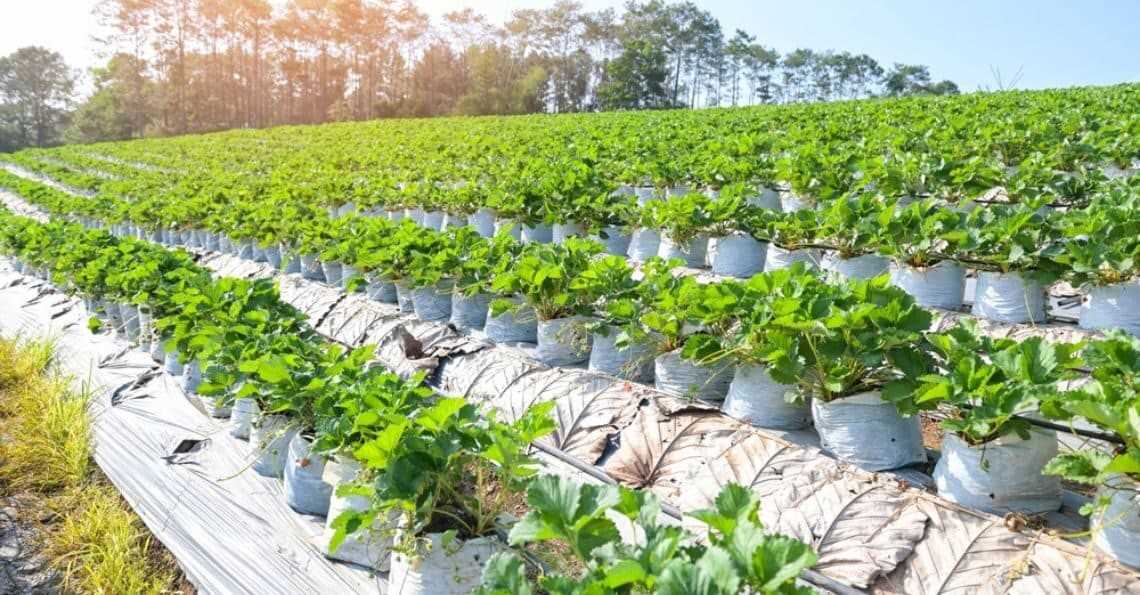
- Choose the Right Variety: When selecting strawberry seedlings, make sure to choose a variety that is suitable for your climate and growing conditions. Some varieties are better suited for cooler climates, while others thrive in warmer weather.
- Start with Quality Seeds: It’s important to start with high-quality strawberry seeds to ensure successful germination and healthy seedlings. Purchase seeds from a reputable supplier or save seeds from a previous crop.
- Provide Adequate Light: Strawberry seedlings require a minimum of 6-8 hours of sunlight per day. If you don’t have access to direct sunlight, consider using artificial grow lights to provide the necessary light for healthy growth.
- Maintain Optimal Temperature: Strawberry seedlings prefer temperatures between 60-80°F (15-27°C) for optimal growth. Avoid exposing seedlings to extreme temperatures, as this can stunt their development.
- Water Regularly: Keep the soil consistently moist but not waterlogged. Strawberry seedlings require regular watering, especially during dry periods. Avoid overhead watering to prevent the spread of diseases.
- Provide Good Drainage: Strawberries prefer well-draining soil. Make sure your pots or containers have drainage holes to prevent water from pooling and causing root rot.
- Fertilize Appropriately: Use a balanced fertilizer or compost to provide essential nutrients to the seedlings. Avoid over-fertilizing, as this can lead to excessive foliage growth and fewer fruits.
- Protect from Pests and Diseases: Keep an eye out for common pests like slugs, snails, and aphids. Monitor the plants regularly and take action at the first sign of infestation. Additionally, practice good sanitation measures to prevent the spread of diseases.
- Transplant Seedlings: Once the seedlings have grown their second set of true leaves, they are ready to be transplanted into larger containers or your garden. Handle the seedlings carefully to avoid damaging their delicate roots.
- Monitor and Prune: Regularly monitor the strawberry plants for any signs of disease, nutrient deficiencies, or overcrowding. Prune off dead or damaged leaves to promote air circulation and prevent the spread of diseases.
Choosing the Right Strawberry Variety
When it comes to growing strawberry seedlings at home, one important factor to consider is choosing the right variety. There are several different types of strawberries, each with its own characteristics and requirements. Here are some factors to consider when selecting a strawberry variety:
1. Climate and growing conditions
The climate and growing conditions of your area play a crucial role in determining which strawberry varieties will thrive. Some varieties are more cold-tolerant, while others prefer warmer climates. Consider the average temperatures, humidity levels, and sunlight availability in your region.
2. Day-neutral vs. June-bearing
Strawberry plants can be categorized as day-neutral or June-bearing. Day-neutral varieties produce fruit throughout the growing season, while June-bearing varieties produce a larger crop during a specific period, usually in June. Consider your personal preference and the amount of fruit you want to harvest at once.
3. Fruit flavor and characteristics
Different strawberry varieties have distinct flavors and characteristics. Some are sweeter, while others have a slightly tart taste. Consider the size, color, and texture of the fruit you prefer. Additionally, some varieties are better for eating fresh, while others are more suitable for making preserves or baking.
4. Disease resistance
It’s essential to choose strawberry varieties that are resistant to common strawberry diseases in your area. This can help reduce the chances of plant loss and ensure a more successful harvest. Look for varieties that are resistant to diseases such as powdery mildew, verticillium wilt, and botrytis.
5. Plant size and spacing
Consider the size of the plants and how much space you have available. Some strawberry varieties produce larger plants that require more space to grow, while others are more compact and suitable for containers or small gardens.
6. Pollination requirements
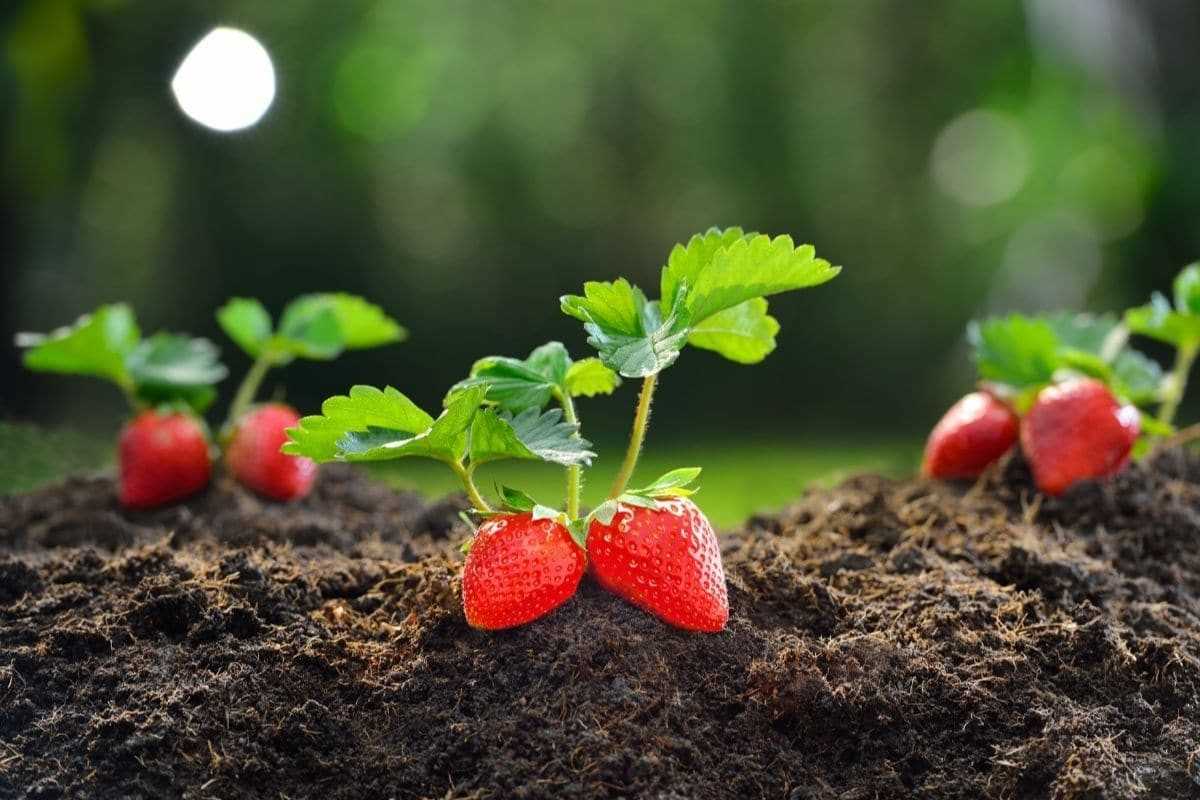
Some strawberry varieties are self-pollinating, while others require cross-pollination with a different variety to produce fruit. If you have limited space or are growing in a greenhouse, choosing a self-pollinating variety can be more convenient. However, if you have ample space and multiple strawberry plants, cross-pollination can lead to better yields.
By considering these factors and doing some research on different strawberry varieties, you can choose the right one that suits your climate, taste preferences, and growing conditions. Remember to follow the specific planting and care instructions for your chosen variety to ensure optimal growth and fruit production.
Preparing the Soil for Strawberry Seedlings
Preparing the soil for strawberry seedlings is an essential step in ensuring their successful growth and development. By providing the right soil conditions, you can create an ideal environment for your strawberry plants to thrive.
1. Choose the Right Location
Before preparing the soil, select a suitable location for your strawberry seedlings. They require at least 6 hours of direct sunlight each day to produce sweet and healthy berries. Ensure that the area has good drainage to prevent waterlogging, as excessive moisture can lead to root rot.
2. Remove any Existing Vegetation
Clear the area of any existing vegetation or weeds. These plants can compete with your strawberry seedlings for nutrients and water, so it’s essential to remove them before planting.
3. Test the Soil pH
Strawberry plants prefer slightly acidic soil with a pH between 5.5 and 6.5. Use a pH test kit or send a soil sample to a laboratory to determine the current pH level. By knowing the pH, you can make the necessary adjustments to ensure optimum growing conditions for your seedlings.
4. Amend the Soil
If your soil is too alkaline, you can lower the pH by adding organic matter such as peat moss, pine needles, or compost. Work the amendments into the soil to a depth of at least 6 inches to ensure they are well incorporated.
5. Improve Drainage
If your soil doesn’t drain well, improve the drainage by adding coarse sand or perlite. These amendments help to create air pockets in the soil, allowing excess water to drain away quickly.
6. Add Fertilizer
To provide the necessary nutrients for your strawberry seedlings, apply a balanced slow-release fertilizer before planting. Follow the manufacturer’s instructions for the recommended amount and method of application.
7. Create Raised Beds or Rows
Raised beds or rows are beneficial for strawberry plants as they improve drainage and prevent waterlogging. They also make it easier to control weeds and pests. Create your raised beds or rows by mounding up the soil to a height of around 6 inches.
8. Mulch the Soil
After planting your strawberry seedlings, apply a layer of organic mulch around the plants. Mulch helps to retain moisture, suppress weeds, and regulate soil temperature. Organic materials like straw, pine needles, or wood chips make excellent mulches for strawberries.
By following these steps, you can prepare the soil to provide optimal growing conditions for your strawberry seedlings. Remember to regularly monitor the soil moisture levels and provide adequate water to ensure the plants’ healthy growth.
Planting Strawberry Seeds
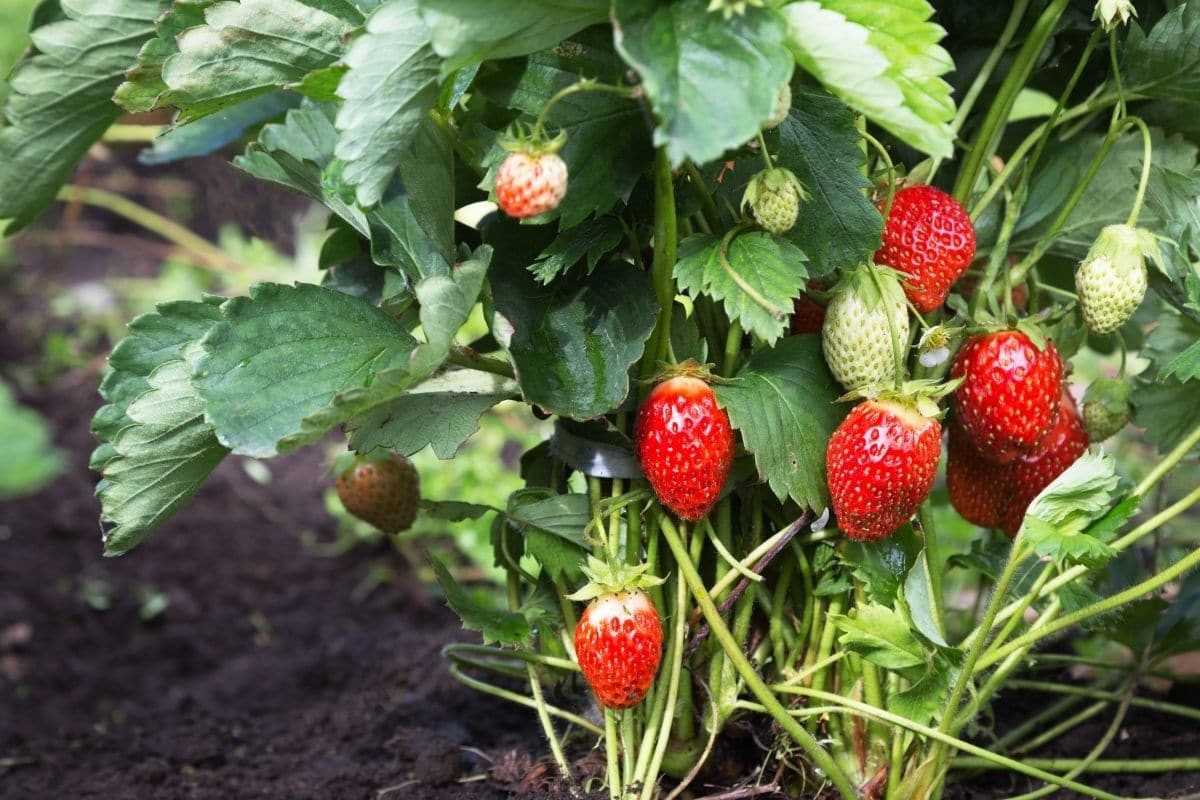
When it comes to growing strawberry plants from seeds, proper planting techniques can significantly increase your chances of success. Here are some essential steps to follow when planting strawberry seeds:
1. Choosing the Right Seeds
Start by selecting high-quality strawberry seeds from a reputable supplier. Look for seeds that are labeled as disease-resistant and suited for your specific climate. It’s also important to choose a variety that is known for its delicious taste.
2. Preparing the Soil
Strawberries prefer well-drained soil that is rich in organic matter. Prepare the soil by removing any weeds and loosening it with a garden fork. Mix in compost or well-rotted manure to improve fertility and drainage.
3. Sowing the Seeds
You can either start the seeds indoors or directly sow them in the garden. If starting indoors, fill seed trays or pots with a good-quality seed-starting mix. Sow the seeds about ¼ inch deep and cover them lightly with soil. Keep the soil consistently moist but not waterlogged.
4. Providing Optimal Conditions
Strawberry seeds require consistent moisture and warmth to germinate. Place the seed trays or pots in a warm location with temperatures around 70 degrees Fahrenheit. Use a misting spray bottle to keep the soil moist, and cover the trays with a plastic dome or plastic wrap to maintain humidity.
5. Transplanting Seedlings
Once the seedlings have developed several sets of true leaves, they are ready to be transplanted into larger pots or directly into the garden. Choose a sunny location with well-drained soil for planting.
6. Hardening Off
Before transplanting seedlings into the garden, it’s important to harden them off. This process involves gradually exposing the seedlings to outdoor conditions over the course of a week. Start by placing them outside for a few hours each day, gradually increasing the duration and intensity of exposure.
7. Planting Outdoors
When transplanting the seedlings outdoors, space them about 12-18 inches apart in rows that are 2-3 feet apart. Dig a hole slightly larger than the root ball and gently place the seedling in the hole. Firmly press the soil around the roots and water thoroughly.
8. Watering and Maintenance
Keep the strawberry plants well-watered, especially during dry periods. Mulching around the plants can help retain moisture and suppress weed growth. Remove any weeds that emerge, and keep an eye out for pests or diseases. Consider using organic pest control methods to protect your plants.
By following these steps, you can successfully plant and grow strawberry seeds to enjoy a bountiful harvest of delicious strawberries in your own backyard!
Providing Adequate Sunlight for Your Strawberry Seedlings
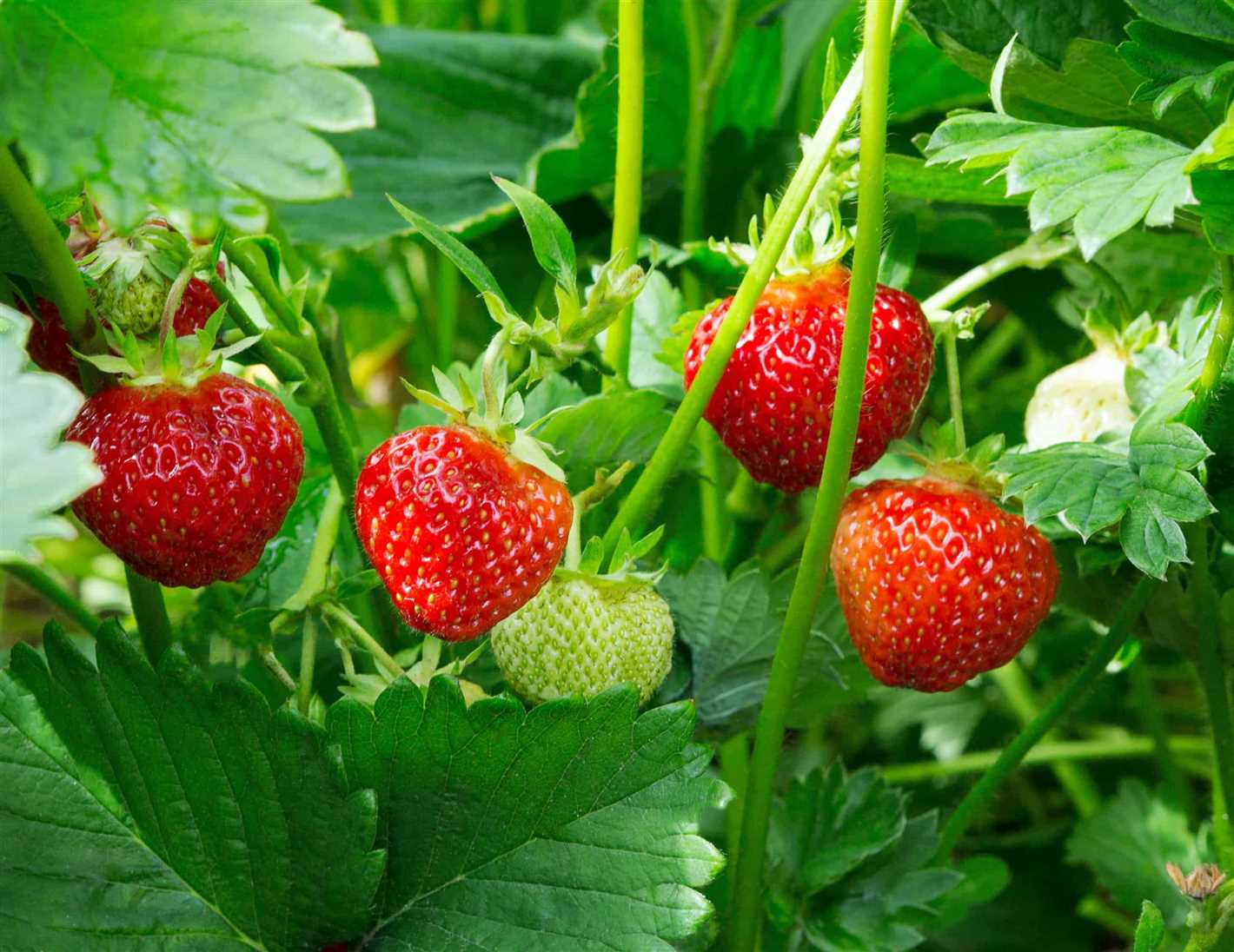
When it comes to growing healthy strawberry seedlings at home, one of the key factors to consider is providing them with adequate sunlight. Strawberries are sun-loving plants and require a good amount of direct sunlight to thrive and produce a bountiful harvest. Here are some tips on how to ensure your strawberry seedlings get the right amount of sunlight:
1. Choose the right location
Select a location in your garden or balcony where your strawberry seedlings can receive at least 6-8 hours of direct sunlight each day. Look for a spot that is not shaded by trees, buildings, or other structures that may block the sunlight. South-facing areas are usually ideal for maximizing sun exposure.
2. Monitor the sun’s path
Observe how the sun moves across your chosen location throughout the day. This will help you identify any potential obstructions or shade patterns that may affect the amount of sunlight your strawberry seedlings receive. Adjust the placement of your seedlings if necessary to ensure they are in a sun-drenched spot.
3. Provide shade during the hottest part of the day
While strawberries require adequate sunlight, they can also suffer from excessive heat. If you live in a hot climate or your seedlings are exposed to intense heat during certain hours, consider providing some shade during the hottest part of the day. This can be done by using shade cloth, a tarp, or even strategically placing potted plants or other objects to create temporary shade.
4. Rotate your seedlings
To ensure all your strawberry seedlings receive an equal amount of sunlight, regularly rotate their positions. This will prevent any plants from being shaded for extended periods and promote uniform growth. Consider rotating them every few days or once per week, especially if you notice any uneven growth patterns.
5. Consider artificial lighting
If you don’t have access to a sunny outdoor space or if you’re trying to grow strawberries indoors, you can supplement natural sunlight with artificial lighting. Use full-spectrum grow lights or LED lights specifically designed for plant growth. Position the lights a few inches above your seedlings and keep them on for 12-16 hours per day to mimic natural sunlight.
Remember, providing adequate sunlight is crucial for the healthy development of strawberry seedlings. By ensuring they receive sufficient sunlight, you’ll increase their chances of producing juicy, flavorful berries when the time comes for harvest.
Watering Your Strawberry Seedlings
Watering your strawberry seedlings properly is essential for their growth and development. Here are some tips to help you ensure your plants receive the right amount of water:
1. Optimal watering schedule
Strawberry seedlings should be watered regularly but not excessively. The frequency of watering will depend on various factors, including the weather and the moisture level of the soil. As a general rule, it’s best to water your seedlings when the top inch of soil feels dry to the touch.
2. Watering technique
When watering your strawberry seedlings, it’s important to provide a deep, thorough watering rather than just surface-level moisture. Water the plants at the base to avoid wetting the foliage, as this can increase the risk of fungal diseases. Use a watering can or a hose with a gentle spray attachment to ensure a slow and even distribution of water.
3. Proper drainage
Ensuring proper drainage is crucial for the health of your strawberry seedlings. The soil should be well-drained to prevent waterlogged conditions, which can lead to root rot. If you are growing your seedlings in containers, make sure they have drainage holes to allow excess water to escape.
4. Mulching

Applying a layer of mulch around your strawberry seedlings can help regulate soil moisture by reducing evaporation. Organic mulch, such as straw or shredded leaves, can also add nutrients to the soil as it breaks down. Leave a small space around the base of each plant when mulching to prevent moisture-related issues.
5. Monitoring soil moisture
Regularly check the moisture level of the soil to ensure it’s not too dry or too wet. Overwatering can suffocate the roots and promote the growth of harmful fungi, while underwatering can cause dehydration and stunted growth. Aim for moist but not waterlogged soil, and adjust your watering schedule accordingly.
By following these watering tips, you can help your strawberry seedlings thrive and produce a bountiful harvest.
Fertilizing Strawberry Seedlings
Proper fertilization is essential for the healthy growth of strawberry seedlings. Providing the right nutrients will ensure vigorous growth and a bountiful harvest. Here are some tips on fertilizing your strawberry seedlings:
1. Choose the right fertilizer
When it comes to fertilizing strawberry seedlings, it’s important to use a balanced fertilizer that is specifically formulated for young plants. Look for a fertilizer with a ratio of 10-10-10 or 14-14-14, which means it contains equal amounts of nitrogen, phosphorus, and potassium.
2. Apply fertilizer at the right time
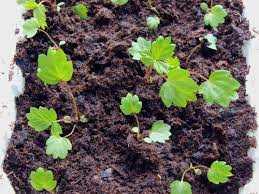
It’s best to apply fertilizer to strawberry seedlings once they have established a few true leaves. This is usually around two to three weeks after planting. Applying fertilizer too early can burn the tender roots of the seedlings.
3. Follow the recommended dosage
Be sure to follow the recommended dosage instructions on the fertilizer package. Applying too much fertilizer can damage the seedlings, while applying too little may not provide enough nutrients for optimal growth. It’s important to find the right balance.
4. Use a slow-release fertilizer
Consider using a slow-release fertilizer for your strawberry seedlings. Slow-release fertilizers provide a steady supply of nutrients over an extended period, which can help promote consistent growth and prevent nutrient deficiencies.
5. Avoid over-fertilization
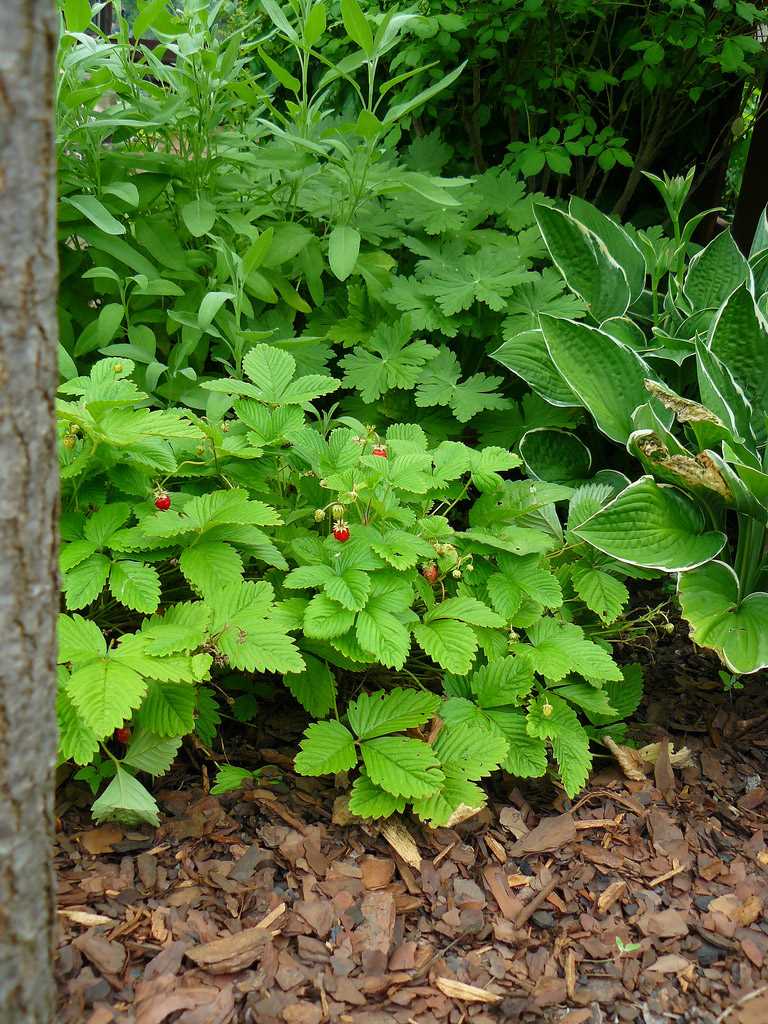
While it’s important to provide the necessary nutrients, over-fertilization can be harmful to your strawberry seedlings. Excessive nitrogen can lead to excessive leaf growth and weak plants, making them more susceptible to diseases and pests. Stick to the recommended dosage and avoid applying fertilizer too frequently.
6. Water after fertilizing
After fertilizing your strawberry seedlings, water them thoroughly to help distribute the nutrients evenly and prevent potential fertilizer burn. Watering also helps the roots take up the nutrients from the soil.
Following these fertilizing tips will help ensure that your strawberry seedlings receive the nutrients they need for healthy growth. Remember to monitor their growth and adjust the fertilization as necessary throughout the growing season.
Protecting Your Strawberry Seedlings from Pests and Diseases
1. Identify Common Pests
- Spider mites: These tiny insects suck the sap from the leaves, causing them to turn yellow or bronze.
- Aphids: These soft-bodied insects cluster on the underside of leaves and feed on the sap, causing stunted growth and distorted leaves.
- Slugs and snails: These slimy pests chew on leaves and stems, leaving behind large irregular holes.
- Strawberry root weevils: These beetles feed on the roots of the plants, which can lead to wilting and decline.
2. Preventive Measures
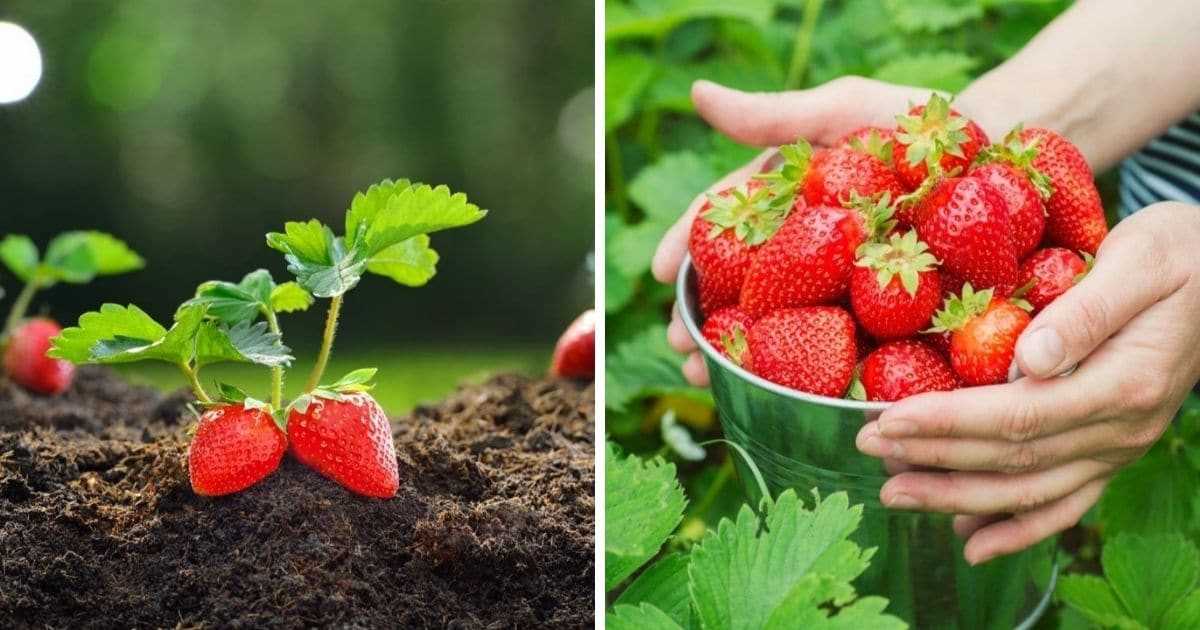
Prevention is key to protecting your strawberry seedlings from pests and diseases. Here are some preventive measures you can take:
- Plant your seedlings in well-draining soil to prevent waterlogged conditions that can attract pests.
- Keep the area around your strawberry plants free from weeds, as they can harbor pests and diseases.
- Provide adequate spacing between plants to improve air circulation and reduce the risk of foliar diseases.
- Clean and sterilize your gardening tools before use to prevent the spread of diseases.
3. Natural Pest Control
If you notice pests on your strawberry seedlings, try these natural pest control methods:
- Handpick and remove pests like slugs and snails from the plants.
- Introduce beneficial insects like ladybugs or lacewings that prey on aphids and other pests.
- Spray a mixture of water and insecticidal soap on infested plants to control spider mites and aphids.
- Apply diatomaceous earth around your strawberry plants to deter crawling pests like slugs and snails.
4. Disease Management
To prevent and manage diseases, follow these guidelines:
- Avoid overhead watering to reduce the risk of foliar diseases. Instead, water at the base of the plants.
- Remove and destroy any infected plant material to prevent the spread of diseases.
- Apply a preventive fungicide spray to protect against common strawberry diseases like powdery mildew and gray mold.
5. Monitor and Act Promptly
Regularly monitor your strawberry seedlings for any signs of pests or diseases. If you notice any issues, take immediate action to prevent further damage. Early intervention is key to keeping your plants healthy and productive.
Transplanting Your Strawberry Seedlings to the Garden
Transplanting your strawberry seedlings to the garden is an exciting step in the process of growing your own strawberries at home. Here are some important tips to ensure a successful transplanting process:
- Timing: Choose the right time to transplant your strawberry seedlings. Ideally, you should wait until after the last frost date in your area, when the soil has warmed up enough for the young plants to thrive.
- Preparing the soil: Before transplanting, prepare the soil by removing any weeds and loosening it with a garden fork or tiller. Add compost or organic matter to improve the soil’s fertility and drainage.
- Spacing: Make sure to leave enough space between the strawberry plants to allow them to grow and spread. Typically, plants should be spaced about 12-18 inches apart in rows that are 3-4 feet apart.
- Watering: Water the seedlings thoroughly before transplanting to ensure they are well-hydrated. This will help them transition to their new environment more easily.
- Transplanting: Dig holes in the garden that are slightly larger than the root ball of each seedling. Carefully remove the seedlings from their containers, avoiding damaging the roots, and place them in the holes. Gently firm the soil around the roots, making sure not to bury the crown of the plants.
- Mulching: After transplanting, apply a layer of mulch around the strawberry plants to help suppress weeds, retain moisture, and regulate soil temperature. Straw, hay, or wood chips are commonly used as mulch for strawberries.
- Watering and care: Water the transplanted seedlings thoroughly after planting, and continue to water them regularly to keep the soil consistently moist. Provide adequate sunlight and monitor for pests or diseases. Consider installing a protective netting to prevent birds from eating the fruits.
Following these guidelines will give your strawberry seedlings a good start in the garden and increase your chances of a bountiful harvest. Remember to be patient and allow the plants to establish themselves before expecting a significant yield.
Question-answer:
What are some tips for growing strawberry seedlings at home?
Here are a few tips for growing strawberry seedlings at home: 1. Start with good quality seeds or transplants. 2. Choose a sunny spot for planting. 3. Provide well-drained soil. 4. Water regularly, but don’t overwater. 5. Mulch to conserve moisture and control weeds. 6. Fertilize properly. 7. Protect from pests and diseases. 8. Harvest the strawberries when they are fully ripe.
When is the best time to start growing strawberry seedlings at home?
The best time to start growing strawberry seedlings at home is in the early spring. This allows the seedlings to establish themselves before the hot summer weather hits. It’s also important to consider the frost dates in your area and plant the seedlings after the danger of frost has passed.
Can I grow strawberry seedlings indoors?
Yes, you can grow strawberry seedlings indoors. However, it’s important to provide the right conditions for them to thrive. This includes using grow lights to provide adequate light, maintaining a consistent temperature, and providing proper ventilation. You will also need to make sure the plants receive enough water and fertilize them regularly. Additionally, since strawberries are self-pollinating, you may need to hand-pollinate the flowers if you don’t have bees or other pollinators indoors.
What are some common problems and challenges when growing strawberry seedlings at home?
Some common problems and challenges when growing strawberry seedlings at home include pest infestation, disease outbreaks, inadequate pollination, and poor fruit set. Strawberries are susceptible to pests such as slugs, snails, aphids, and birds, so it’s important to protect the plants from these pests. Diseases such as powdery mildew, gray mold, and root rot can also affect the plants. Proper care and maintenance, including regular inspection and treatment, can help prevent and manage these issues.
How long does it take for strawberry seedlings to grow and produce fruit?
The time it takes for strawberry seedlings to grow and produce fruit depends on the variety and growing conditions. On average, it takes about 4-6 weeks for the seedlings to establish themselves and start producing flowers. Once the flowers are pollinated, it generally takes another 4-6 weeks for the fruits to mature and become ready for harvest. However, it’s important to note that some varieties may take longer or shorter to reach maturity.







